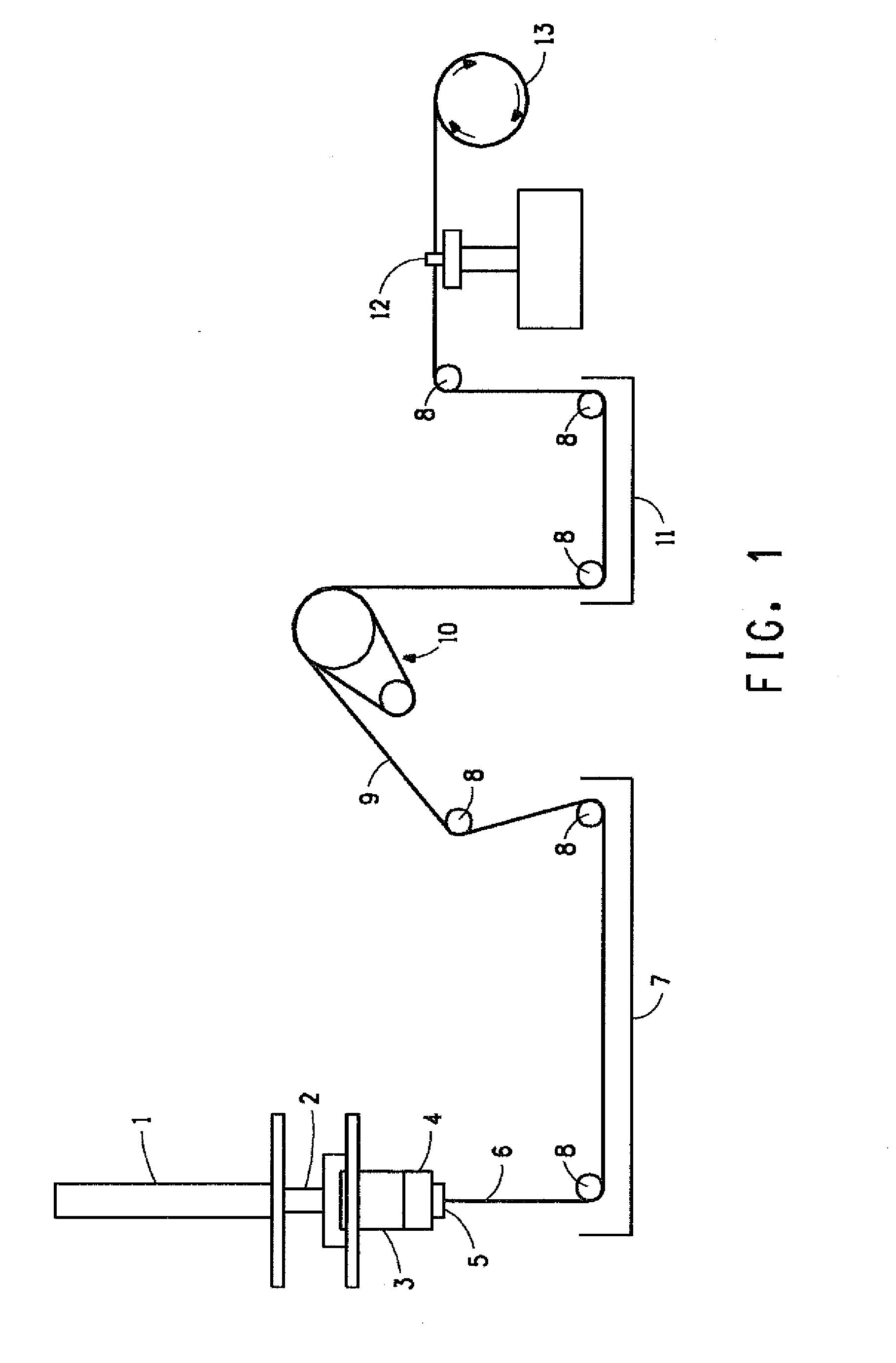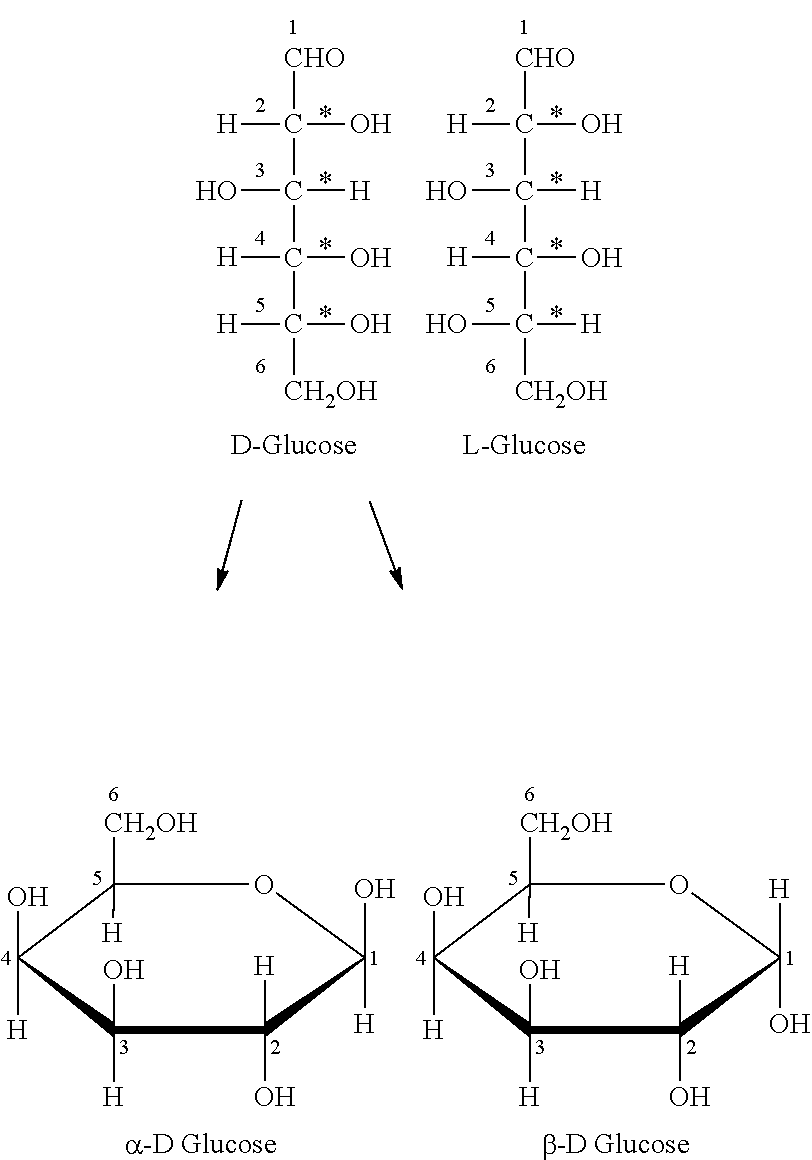Novel composition for preparing polysaccharide fibers
- Summary
- Abstract
- Description
- Claims
- Application Information
AI Technical Summary
Benefits of technology
Problems solved by technology
Method used
Image
Examples
examples
Preparation of Glucosyltransferase (GtfJ) Enzyme
Materials
[0044]Dialysis tubing (Spectrapor 25225-226, 12000 molecular weight cut-off) was obained from VWR (Radnor, Pa.).
[0045]Dextran and ethanol were obtained from Sigma Aldrich. Sucrose was obtained from VWR.
[0046]Suppressor 7153 antifoam was obtained from Cognis Corporation (Cincinnati, Ohio).
[0047]All other chemicals were obtained from commonly used suppliers.
Seed Medium
[0048]The seed medium, used to grow the starter cultures for the fermenters, contained: yeast extract (Amberx 695, 5.0 grams per liter (g / L)), K2HPO4 (10.0 g / L), KH2PO4 (7.0 g / L), sodium citrate dihydrate (1.0 g / L), (NH4)2SO4 (4.0 g / L), MgSO4 heptahydrate (1.0 g / L) and ferric ammonium citrate (0.10 g / L). The pH of the medium was adjusted to 6.8 using either 5N NaOH or H2SO4 and the medium was sterilized in the flask. Post sterilization additions included glucose (20 mL / L of a 50% w / w solution) and ampicillin (4 mLIL of a 25 mglmL stock solution).
Fermenter Medium
[00...
examples 1-9
Preparation of Polymer P1 (E117134-81-2)
(E117134-8-1 Method)
[0069]Twenty liters of an aqueous solution was prepared by combining 3000 g of sucrose (VWR #BDH8029), Dextran T-10 60 g (Sigma #D9260), undenatured ethanol (Sigma Aldrich #459844) and one liter of potassium phosphate buffer adjusted to pH 6.8-7.0. All of the ingredients were added in the amount listed in Table 1, the pH was adjusted and the volume brought up to 20 liters. The solution was then charged with 200 mL of the enzyme extract prepared supra and allowed to stand at ambient temperature for 144 hours. The resulting glucan solids were collected on a Buchner funnel using a 325 mesh screen over 40 micrometer filter paper. The filter cake was suspended in deionized water and filtered twice more as above. Finally two additional washes with methanol were carried out, the filter cake was pressed out on the funnel and dried in vacuum at room temperature. Yield: 403 grams of white flaky solids.
[0070]Molecular weights were det...
examples 10-18
Preparation of Polymer P2 (E117134-83)
E116007-42 Method
[0074]Three liters of an aqueous solution was prepared by combining 15% sucrose (VWR #BDH8029), Dextran T-10 6 g (Sigma #D9260), 3 g of BN biocide from Arch and potassium phosphate buffer adjusted to pH 6.8-7.0. All of the ingredients were added in the concentrations listed in Table 1. The pH was adjusted and the volume brought up to 3 liters. The solution was then charged with enzyme extract 20.1 mL (0.67 volume percent) prepared supra and allowed to stand at ambient temperature for 144 hours. The resulting glucan solids were collected, filtered, and washed following the procedures of Examples 1-9. Yield: 42.9 grams of white flaky solids.
[0075]The Mn and Mw were determined to be 85041 and 174664 respectively. The 13C NMR spectrum was consistent with dextran primed glucan polymer as described in the preparation of polymer P1.
Spinning Solution S2 (117134-83)
[0076]The procedures for making the spinning solutions of Examples 1-10 w...
PUM
| Property | Measurement | Unit |
|---|---|---|
| Fraction | aaaaa | aaaaa |
| Fraction | aaaaa | aaaaa |
| Fraction | aaaaa | aaaaa |
Abstract
Description
Claims
Application Information
 Login to View More
Login to View More - R&D
- Intellectual Property
- Life Sciences
- Materials
- Tech Scout
- Unparalleled Data Quality
- Higher Quality Content
- 60% Fewer Hallucinations
Browse by: Latest US Patents, China's latest patents, Technical Efficacy Thesaurus, Application Domain, Technology Topic, Popular Technical Reports.
© 2025 PatSnap. All rights reserved.Legal|Privacy policy|Modern Slavery Act Transparency Statement|Sitemap|About US| Contact US: help@patsnap.com



